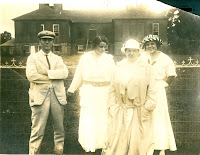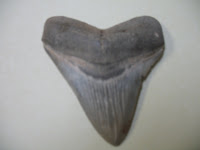Judy Hynson and I are planning two temporary exhibits to go in our changing exhibition gallery in the Visitor Center. One exhibit space will be dedicated to visitors’ experiences at Stratford Hall. People have visited the Great House at Stratford from the late 1730s to the present for a variety of reasons. Fortunately for us, many of these travelers recorded impressions of their visits in writing and photographs. From these descriptions and mementos, we are better able to document the changes made to the interior and exterior of the house over the centuries.

We’re currently collecting photos of visitors to Stratford Hall, whether those photos were taken of people in front of the Great House or elsewhere on the historic site. This photograph was taken of some visitors in the 1920s and given to our collection. If you have any photographs—historic or current!—of you or your friends and family at Stratford Hall, please contact me at llawfer@stratfordhall.org or at (804) 493-8038, ext. 1920. Judy and I are hoping to collect all sorts of visitors’ photos so we can display them.

The second exhibit we’re currently working on is about fossils that have been found at Stratford Hall. We’re looking forward to putting together some of our collections and working with Dr. Lauck Ward, from the Virginia Museum of Natural History, to identify various types of fossilized bones, sharks’ teeth, vertebrae, and shells from as far back as the Miocene era, 12-17 million years ago. Do you have fossils you’ve found at Stratford Hall that you’d like to donate to our collection? If so, please contact me.
We expect these exhibits to be completed and installed by the end of October 2009. Be sure to stop by and see them when you next visit Stratford Hall!
 eaving one to be restored. I was able to employ a fall intern, who is currently restoring that final window. We have been scraping paint, repairing plaster, and even getting some finish coats of paint on windows. Within the next week we should be able to start putting finish coats of paint on the walls and trim. In what will be the workshop and the bedchamber, the walls be painted with a simulated whitewash, while the trim and windows will be painted with a dark brown, which would have been considered "Span
eaving one to be restored. I was able to employ a fall intern, who is currently restoring that final window. We have been scraping paint, repairing plaster, and even getting some finish coats of paint on windows. Within the next week we should be able to start putting finish coats of paint on the walls and trim. In what will be the workshop and the bedchamber, the walls be painted with a simulated whitewash, while the trim and windows will be painted with a dark brown, which would have been considered "Span ish Brown" in the 18th Century. Spanish Brown was often used for baseboards and used if an outbuilding's interior elements were painted with a color. This was the case because it was cheap and hid dirt well. The last room, which has wood paneled walls, will be painted a blue-gray color with Spanish Brown baseboards. The brown being used was identified on some baseboards in the Great House from the same time period.
ish Brown" in the 18th Century. Spanish Brown was often used for baseboards and used if an outbuilding's interior elements were painted with a color. This was the case because it was cheap and hid dirt well. The last room, which has wood paneled walls, will be painted a blue-gray color with Spanish Brown baseboards. The brown being used was identified on some baseboards in the Great House from the same time period.




